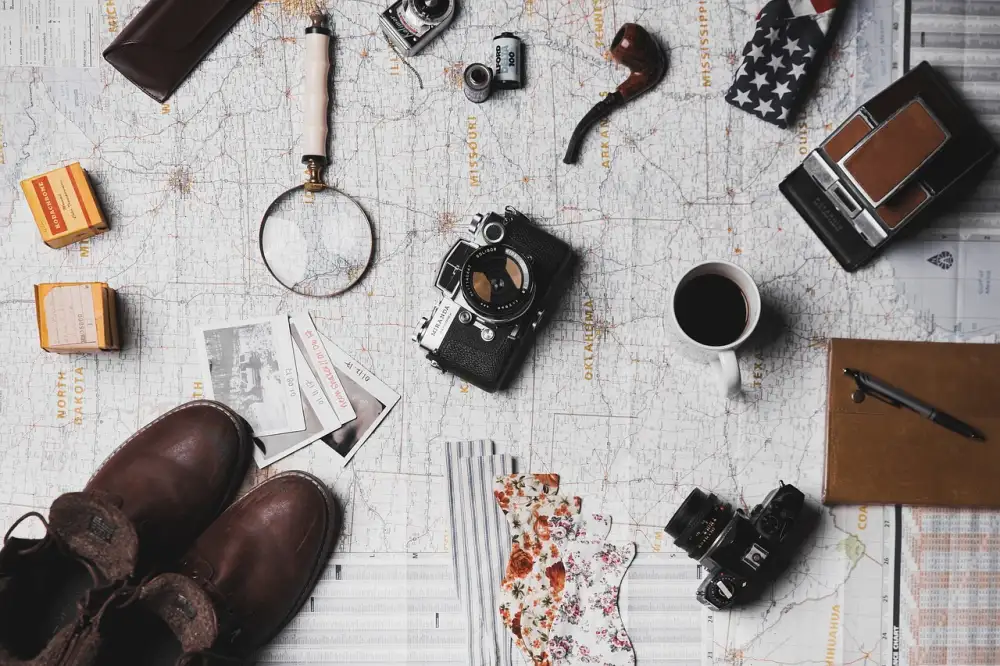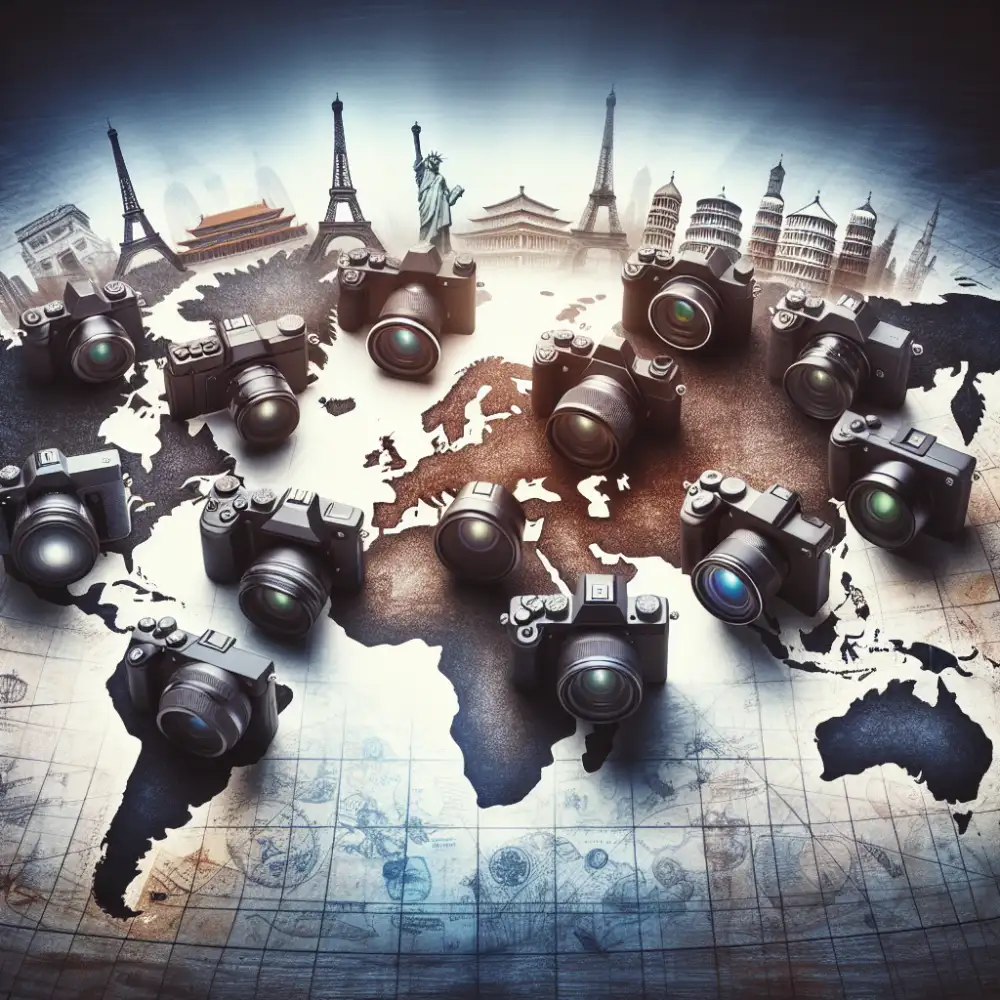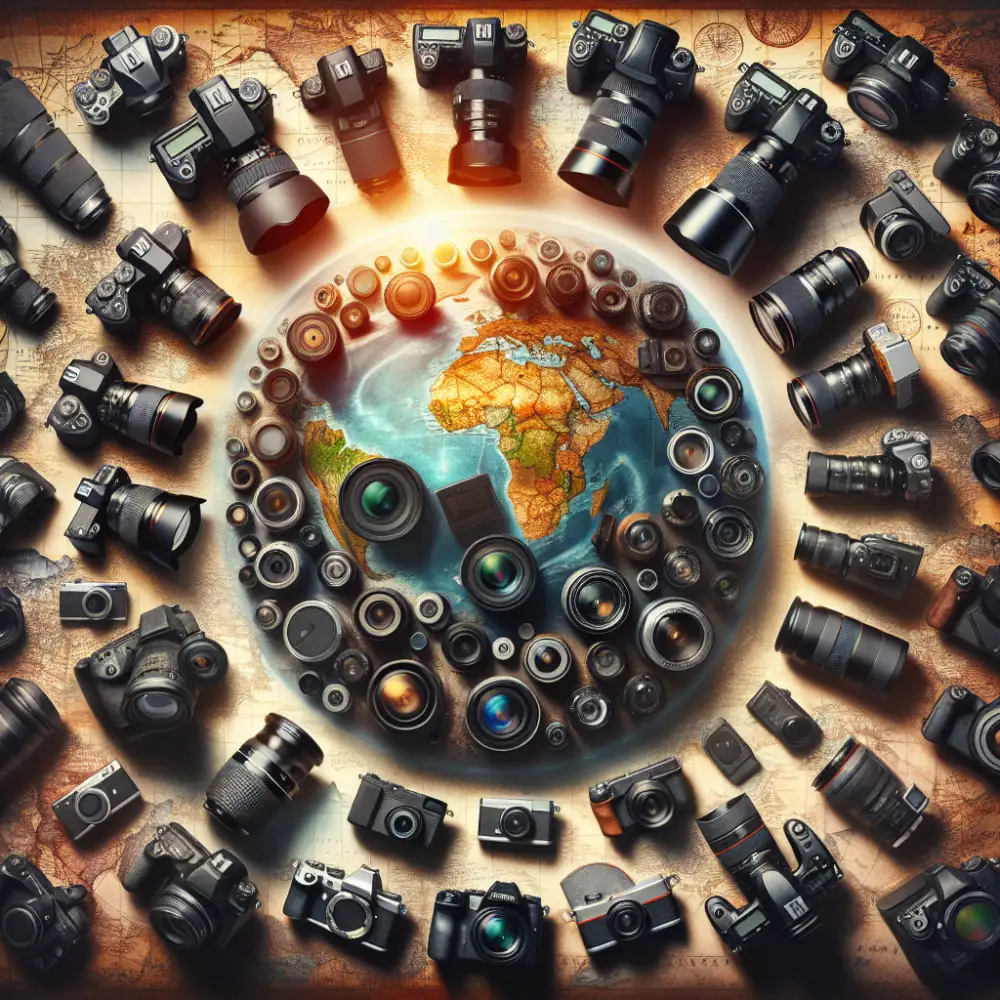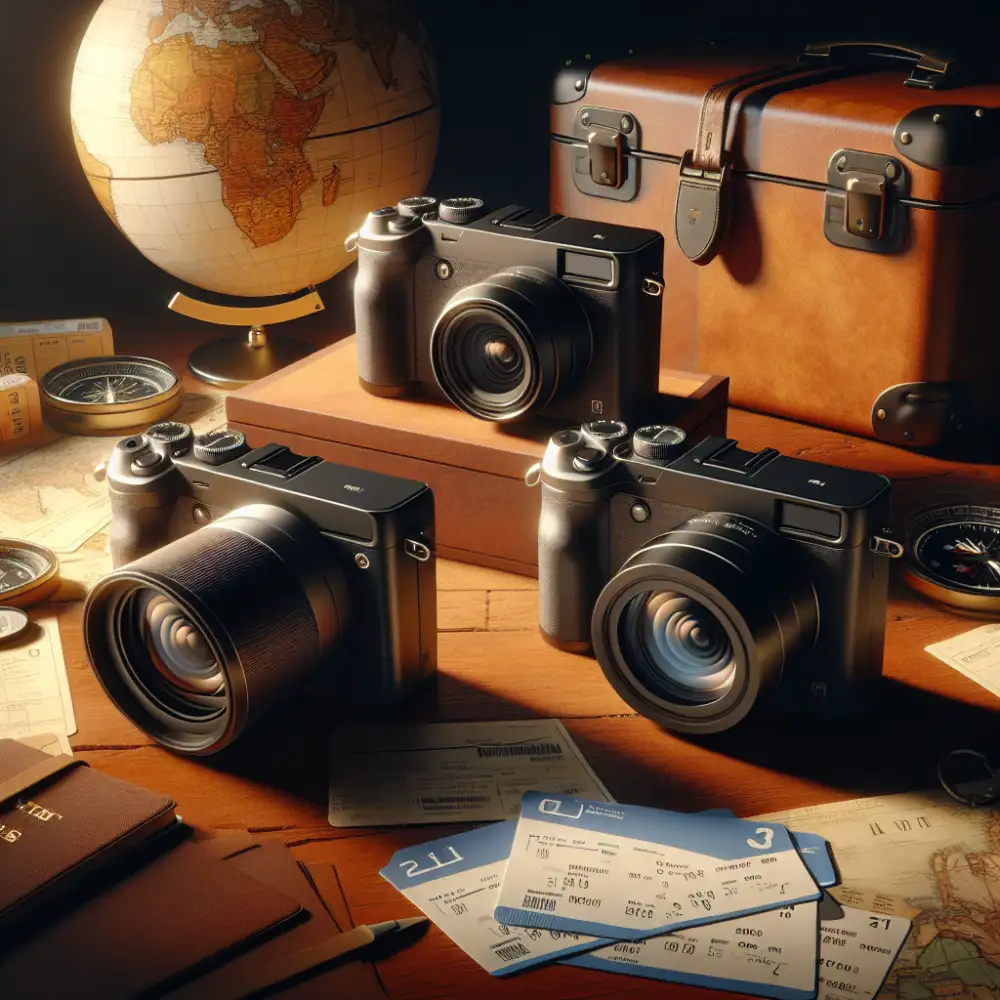Best Travel Cameras of 2015: Capture Your Adventures in Stunning Detail

- Sensor Size and Type
- Megapixels Myth Debunked
- Image Stabilization Technology
- Lens Choices: Zoom vs. Prime
- Autofocus Performance Matters
- ISO Range and Low Light Ability
- Video Recording Capabilities 4K?
- LCD Screen: Touchscreen or Viewfinder
- Wi-Fi and GPS: Sharing on the Go
- Battery Life: Essential for Travelers
- Size and Weight: Portability Factor
- Weather Resistance: For Adventures
- Durability: Can it Handle the Trip?
- Price Point: Budget Considerations
Sensor Size and Type
In the world of travel cameras in 2015, sensor size and type were key factors influencing image quality. Larger sensors, with their greater surface area, captured more light. This translated into superior low-light performance, wider dynamic range, and that coveted shallow depth of field, ideal for blurring out backgrounds and making your subject pop. Many of the top travel cameras of 2015 boasted either 1-inch sensors, striking a balance between size and image quality, or APS-C sensors, found in some high-end compact cameras and mirrorless models, rivaling the image quality of DSLRs. Of course, sensor type played a crucial role too. CMOS sensors, known for their speed and efficiency, dominated the market. Backside illuminated (BSI) CMOS sensors further enhanced low-light sensitivity, making them a popular choice for travel photographers venturing into dimly lit markets or capturing stunning night scenes.
Megapixels Myth Debunked
In the world of travel cameras, bigger isn't always better, especially when it comes to megapixels. Many travelers fall into the trap of thinking that more megapixels automatically equal better photos. This is the megapixel myth. While a higher megapixel count means you can print larger photos without losing quality, it doesn't necessarily translate to better image quality overall. In fact, some of the best travel cameras of 2015, like the Sony CyberShot RX100 III and the Canon PowerShot G7 X, boasted impressive image quality with sensors packing around 20 megapixels. These cameras prioritized larger sensor pixels over cramming in more megapixels. This approach resulted in better low-light performance and a wider dynamic range, crucial factors for capturing stunning travel photos in various conditions. Remember, factors like lens quality, sensor size, and image processing play a much more significant role in determining the final image quality than megapixels alone. So, when choosing your next travel companion, don't get hung up on the megapixel race. Focus on finding a camera that offers a balance of features, portability, and performance that suits your needs.
Image Stabilization Technology
2015 marked a turning point for travel cameras, and a key factor was the advancement in image stabilization technology. This tech, designed to counteract shaky hands, became increasingly sophisticated, resulting in sharper images and smoother videos. Optical image stabilization, which physically shifts lens elements, was a popular choice in many top travel cameras of 2015. This method proved particularly effective in low-light conditions where camera shake is more prominent. Some models even incorporated electronic image stabilization, utilizing software algorithms to analyze and correct for movement. While not as effective as optical stabilization in all situations, electronic stabilization offered a more affordable solution in some of the best travel cameras of the year. The rise of hybrid stabilization systems, combining both optical and electronic methods, also began to emerge, offering the best of both worlds for enhanced stability. This evolution in image stabilization technology played a crucial role in making 2015 a pivotal year for travel photography and videography. Travelers could now capture their adventures with greater clarity and precision, even in challenging shooting conditions.

Lens Choices: Zoom vs. Prime
When choosing the best travel camera in 2015, lens choice is key. Zoom lenses, like the popular 18-200mm or 28-300mm, offer versatility. You can capture sweeping landscapes and zoom in for tighter shots, all with one lens. This is perfect for travelers who want to pack light.
Prime lenses, on the other hand, have a fixed focal length, like 35mm or 50mm. While they don't zoom, they often boast wider apertures (like f/1.8 or f/1.4). This allows for better low-light performance and that coveted shallow depth of field, ideal for artistic travel photos with creamy backgrounds.
Ultimately, the best travel lens in 2015 depends on your shooting style and needs. If you prioritize versatility and convenience, a zoom lens is a great choice. If you value image quality and creative control, consider a prime lens. Many travel photographers even opt for a combination of both!
Autofocus Performance Matters
In the realm of travel photography, capturing fleeting moments with precision is paramount, and that's where autofocus (AF) performance takes center stage. The best travel cameras of 2015 excelled in this domain, boasting sophisticated AF systems that could lock onto subjects with speed and accuracy. Whether you were photographing bustling street scenes in Tokyo or wildlife encounters in the Serengeti, these cameras ensured sharp focus, even in challenging lighting conditions.
One notable advancement in 2015 was the increasing prevalence of hybrid AF systems, combining the strengths of phase-detection and contrast-detection methods. Phase-detection AF, known for its swiftness, excelled at tracking moving subjects, while contrast-detection AF offered exceptional accuracy, particularly in low light. This potent combination allowed photographers to capture both fast-action and static scenes with remarkable clarity.
Moreover, leading travel cameras of 2015 featured an extensive array of AF points spread across the image sensor. This wider coverage empowered photographers to compose shots with greater creative freedom, knowing that the camera could accurately focus on subjects even if they weren't positioned in the center of the frame. Whether it was capturing the intricate details of architectural marvels or the fleeting expressions of local artisans, these cameras empowered travelers to document their journeys with exceptional image quality.

ISO Range and Low Light Ability
In 2015, the best travel cameras didn't necessarily boast sky-high megapixels. Instead, emphasis was placed on how well they performed in various lighting conditions, a crucial factor for travelers capturing memories in dimly lit cafes or under the starry night sky. A camera's ISO range became a key consideration. The ISO range indicates the camera's sensitivity to light. A wider ISO range, particularly one that extends into higher numbers, meant better performance in low light situations. Top travel cameras in 2015 often featured impressive ISO ranges, allowing photographers to capture sharp, detailed images even as the sun began to set. Cameras like the Sony RX100 III and the Canon PowerShot G7 X stood out. They offered a good balance of compact size and impressive low light capabilities, making them ideal for travelers who wanted to pack light without sacrificing image quality. These cameras produced usable images at higher ISO settings, minimizing the need for a bulky tripod and allowing for spontaneous shots in challenging lighting conditions. While 2015 saw the rise of smartphone photography, these compact cameras provided a significant step up in image quality, especially in low light, making them a worthy investment for discerning travelers.
Video Recording Capabilities 4K?
In 2015, 4K video recording was still gaining traction in travel cameras. While not as widespread as in later years, some models offered this feature, albeit often with limitations. The Sony Cyber-shot RX100 IV, for example, could capture 4K footage, but only in short bursts. This limitation was primarily due to the processing power required for 4K video, which generated significant heat and could impact battery life.
Other notable travel cameras of 2015 with 4K recording included the Panasonic Lumix DMC-TZ70 and the Samsung Galaxy Camera 2. However, these models often came with a higher price tag. For travelers on a budget, many excellent 1080p video recording options provided stunning footage. Ultimately, the decision of whether to prioritize 4K capabilities depended on individual needs and budget constraints.
LCD Screen: Touchscreen or Viewfinder
When choosing among the best travel cameras of 2015, the LCD screen is a key factor. Some cameras offer touchscreens, while others stick to traditional viewfinders. Let's break down the pros and cons of each:
Touchscreens were all the rage in 2015, and for good reason. They make navigating menus and settings a breeze. Plus, tapping to focus and shoot is incredibly intuitive, especially for those used to smartphones. However, touchscreens can be a bit finicky in bright sunlight, making it hard to see what you are doing.


Viewfinders, on the other hand, provide a more traditional shooting experience. They excel in bright conditions, allowing you to compose your shots with ease. Some photographers find them more ergonomic, especially for extended shooting sessions. However, viewfinders can feel a bit cramped, especially on compact travel cameras.
Ultimately, the best choice depends on your personal preferences and shooting style. If you value ease of use and quick adjustments, a touchscreen might be your best bet. If you prioritize a classic shooting experience and excellent visibility in all conditions, a viewfinder could be the way to go.
Many of the top travel cameras of 2015 offered a hybrid approach, featuring both a touchscreen and a viewfinder. This gave photographers the flexibility to choose the best method for each situation.
Wi-Fi and GPS: Sharing on the Go
In 2015, the best travel cameras started speaking a new language: Wi-Fi and sometimes even GPS. No longer were you limited to sharing your adventures after returning home. Imagine instantly beaming that epic sunset photo to Instagram or uploading a hilarious travel vlog to YouTube, all before your dinner reservation. Top travel cameras of 2015 made this a reality.
Built-in Wi-Fi allowed for seamless image transfer to your smartphone or tablet. This meant you could bypass the hassle of memory cards and card readers, editing and sharing your photos on the go. Some models even went a step further, offering remote control functionality via your smartphone. This was a game-changer for group photos or wildlife shots, letting you trigger the shutter from afar.
And then there was GPS. Imagine every photo you took automatically tagged with its location. No more fuzzy memories trying to recall where you were when that breathtaking vista unfolded. GPS tagging meant your travel photos doubled as a visual journal, effortlessly mapping out your adventures. While not as ubiquitous as Wi-Fi in 2015, GPS was a sought-after feature in top travel cameras, adding a new layer of depth to your travel memories.
Battery Life: Essential for Travelers
For any traveler, long battery life in a camera is non-negotiable. Imagine trekking through the Amazon rainforest, capturing breathtaking shots of exotic birds, only to have your camera die just as a jaguar emerges from the foliage. Disappointing, right? In 2015, several cameras rose to the challenge, earning praise for their exceptional battery performance. Models like the Sony Cyber-shot RX100 III and the Panasonic Lumix DMC-ZS50, for example, boasted impressive shot counts on a single charge, ensuring you could capture a full day's adventure without needing to hunt for a power outlet. These cameras, along with others like the Canon PowerShot G7 X and the Olympus OM-D E-M10, became favorites among travel photographers who valued reliability and the freedom to explore without battery anxiety. Remember, when you're on the go, every shot counts, and a camera with excellent battery life ensures you never miss that perfect moment.

In 2015, the travel photography game changed. Mirrorless cameras were gaining traction, offering high-quality images in smaller packages.
Blake Montgomery
Size and Weight: Portability Factor
In the realm of travel cameras in 2015, size and weight played a crucial role in determining their portability factor. Travelers sought compact and lightweight cameras that could easily slip into their pockets or small bags without weighing them down. Gone were the days of bulky DSLRs that felt like bricks around your neck.
The best travel cameras of 2015 boasted sleek designs and lightweight materials, making them ideal companions for adventurers on the go. Mirrorless cameras, in particular, gained significant popularity due to their compact size without compromising image quality. These cameras ditched the bulky mirror mechanism found in DSLRs, resulting in a smaller body while still offering interchangeable lenses for versatility.
Point-and-shoot cameras also remained a popular choice for travelers seeking ultimate portability. These pocket-friendly devices packed impressive zoom capabilities and image stabilization technologies into their small frames. Whether you were exploring bustling city streets or hiking scenic trails, the best travel cameras of 2015 ensured that capturing stunning photos didn't come at the expense of convenience.
Weather Resistance: For Adventures
When you're battling the elements to capture that perfect shot, you need a camera that can weather the storm. In 2015, several top travel cameras boasted impressive weather resistance, making them ideal companions for adventurous photographers.
Cameras like the Olympus Tough TG-4 and the Nikon Coolpix AW130 were built to withstand the elements. These rugged cameras could handle extreme temperatures, resist dust and dirt, and even survive accidental drops. Their waterproof construction allowed for stunning underwater photography, opening up a world of creative possibilities for travelers.
These features were particularly appealing to adventure enthusiasts and outdoor photographers who needed a reliable camera that could keep up with their active lifestyles. Whether you were trekking through rainforests, exploring underwater caves, or simply caught in a sudden downpour, a weather-resistant travel camera provided peace of mind and ensured you wouldn't miss capturing those unforgettable moments.

Durability: Can it Handle the Trip?
When choosing a travel camera in 2015, durability is key. You don't want your precious memories lost because your camera couldn't handle a little dust or a splash of water. Some 2015 models were built tough with weather-sealed bodies, able to withstand the elements. Look for cameras with rugged construction, perhaps featuring magnesium alloy frames. Consider if the camera is shockproof, especially if adventure travel is your thing. Remember, a camera that can survive the bumps and bruises of travel will be there to capture every moment.
Price Point: Budget Considerations
In 2015, the travel camera market catered to every budget, from shoestring backpackers to luxury globetrotters. Entry-level point-and-shoot cameras offered ease of use and affordability, starting around $100. These compact companions were perfect for casual photographers who prioritized convenience and value. For those seeking better image quality and more creative control, advanced compacts and mirrorless cameras provided a step up, ranging from $300 to $700. These models boasted larger sensors, versatile zoom ranges, and manual controls, striking a balance between performance and price.
At the higher end of the spectrum, DSLRs remained the gold standard for professional-grade image quality and lens options, with prices starting around $500 for entry-level models and exceeding $1000 for professional bodies. Enthusiasts and aspiring photographers often gravitated towards DSLRs for their robust features and the ability to capture stunning landscapes, portraits, and everything in between. Ultimately, the best travel camera for you in 2015 depended on your individual needs, photographic aspirations, and budget.
Published: 09. 07. 2024
Category: Food



